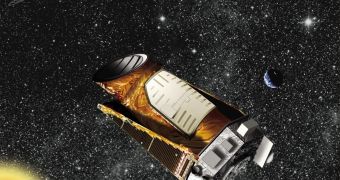The Kepler Space Telescope was designed with one purpose in mind, namely to discover as many exoplanets as possible. In that sense, it's been a huge success, as there are hundreds of confirmed planets and thousands of candidates.
But the space telescope has been having some problems. The data collection continues undisturbed, but the mission operators are worried that a mechanical failure may leave the telescope unable to carry out the rest of its mission as planned.
In summer last year, one of the four reaction wheels that were used to keep the telescope pointing at the same exact portion of space failed. It showed signs of increased friction and finally stopped working altogether.
Kepler only needs three wheels to operate, one for each of the three axes, and one was a spare. But now, a second wheel is exhibiting the same issues. Mission control even let the telescope sit still, idly, for 10 days in January hoping that the rest would redistribute the lubricant.
It didn't work, and the wheel continues to show signs of problems. The team has mostly given up trying to fix it and is now looking at contingency plans.
There is a hope that the wheel won't fail too soon and that operations will continue even with these issues. However, the team is experimenting with ideas on what can be done if the wheel fails, perhaps using a combination of the remaining two wheels and thrusters to align the telescope.
Alternatively, Kepler could be switched to a new scanning mode in which the telescope won't look at the same exact portion of the sky. Scientists are trying to determine whether this mode of operation would yield any useful results.
Even if nothing can be done, the data Kepler has amassed so far will still take a few more years to analyze completely.

 14 DAY TRIAL //
14 DAY TRIAL //